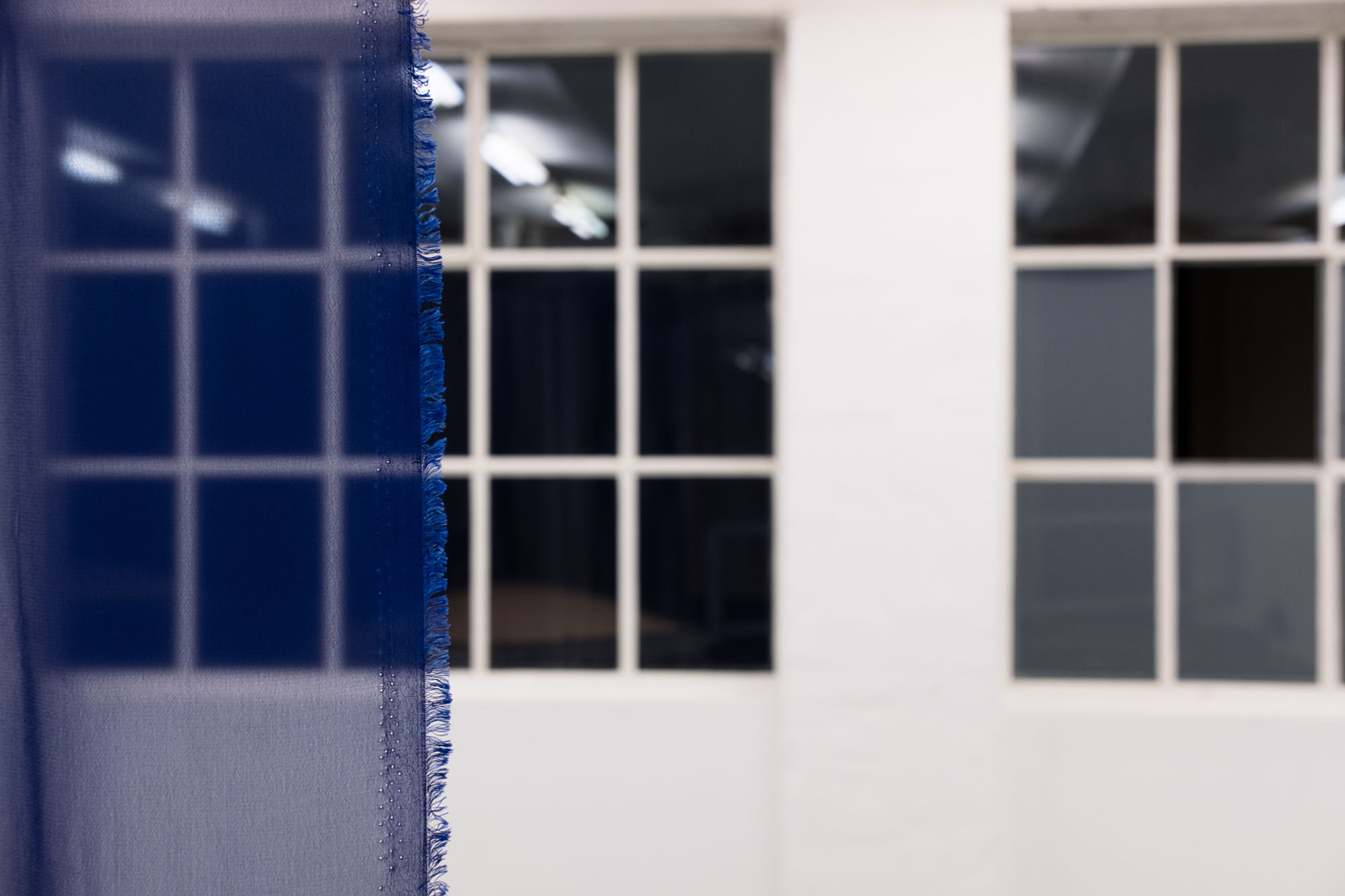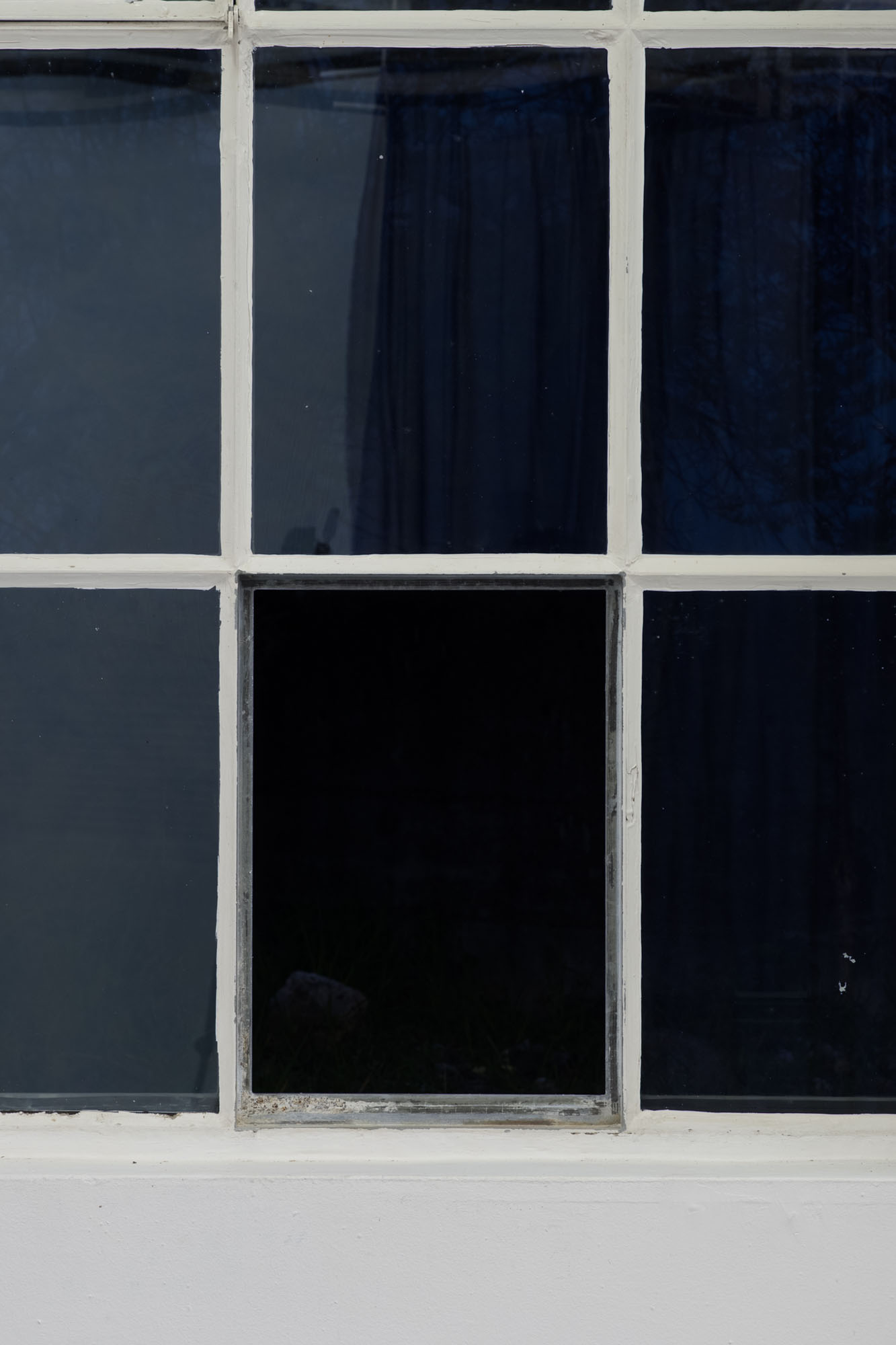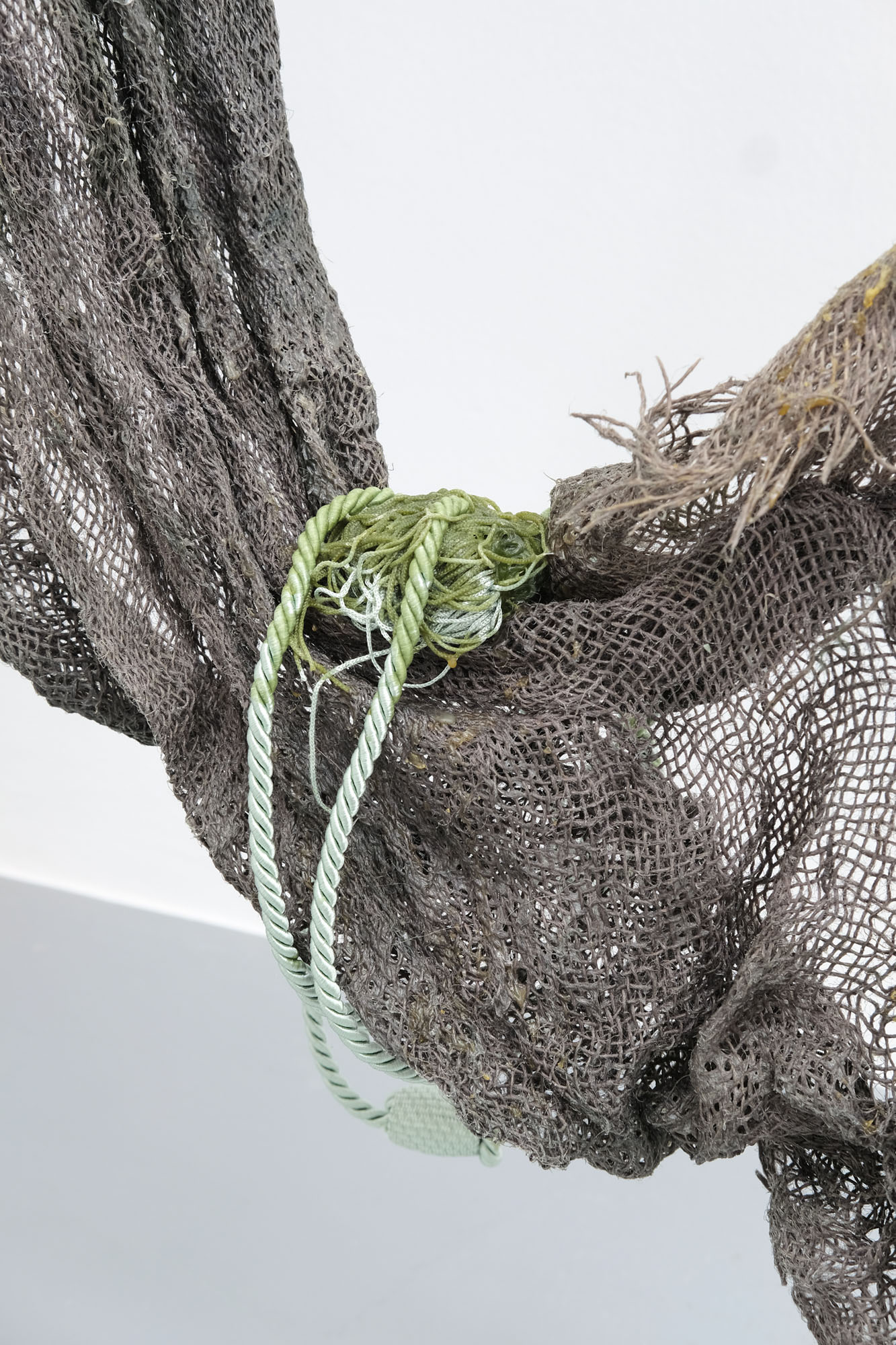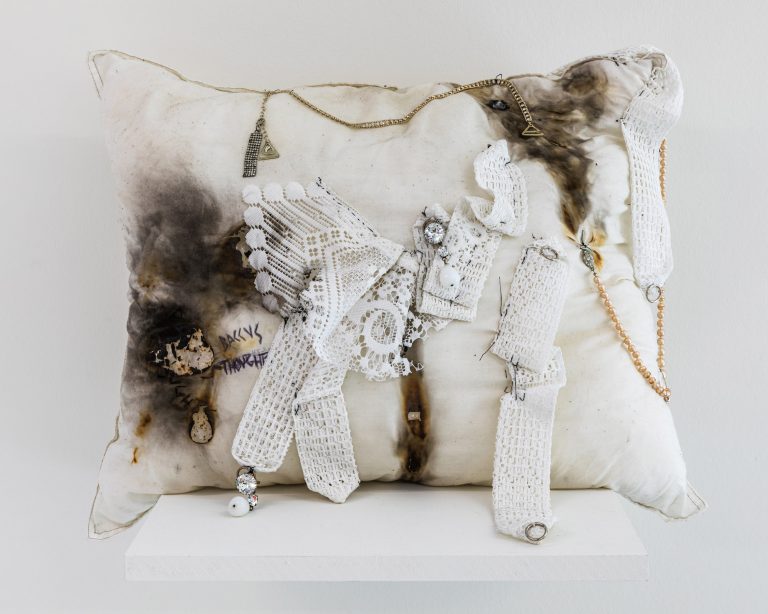Artists: Brigham Baker, Franziska Baumgartner, Samantha Bohatsch, Marc Buchy, Alison Darby, Clémence de La Tour du Pin, Marta Djourina, Neha Kudchadkar, Sidsel Ladegaard, Sara Petrucci, Jacques Henri Sennwald, Simon W Marin
Exhibition title: Cette Question qui vous Brûle les Lèvres
Curated by: Marie DuPasquier with Jacques-Henri Sennwald and CAN team
Venue: CAN Centre d’Art Neuchâtel, Neuchâtel, Switzerland
Date: April 13 – May 19, 2019
Photography: Sebastian Verdon / all images copyright and courtesy of the artists and CAN Centre d’Art Neuchâtel
“Thoughts experiments are material matters”1
Burn your fingertips and anyone in this region of Neuchâtel and Jura will recommend that you call the person who could heal the wound from afar. The secret. You would then add the thoughts to the many possible creams and ointments applied to protect the scorched spot and with a little bit of chance it would disappear in an impulse of accelerated regeneration.
Sunscreen, regeneration cream, salt of sweat, grease, pelage, carapace or other dwellings are produced or added to this primary shelter that we consider as skin, as many external cloths to the many internal protective strata. This apparent opacity arouses fascination for transparency, as evidence the successful efforts of Dr. Roentgen in the 19th century to overcome this membrane with x-rays and reach the depths. Often considered as the protective container of organs, mucus and humors, it is nevertheless vulnerable. If it regenerates through the continuous process of composition and decomposition, it also carries our imprints on the lips and fingertips. It stocks scars, and other traumas, hosts thoughts and desires, to which we add tattoos, piercings, chips and wishes for infinite malleability. Dermographia2. Epidermis is a place of storage, a virtual, symbolic and physical data base; a surface with and on which we write. From a surface of protection to an identity marker, it preserves and conveys our own remains and possibly the ones of generations. It becomes a surface of projection.
After having caught the last sunrays, you might come in, walk along the corridor and climb the stairs. Wandering through the CAN, you could become aware of the scale of the rooms and their resonance characteristics. You entangle with its volumes, relate to its surfaces and materials. You’re situated in a space, in an art center. You get closer to the artworks. You’ll gaze at a wall piece while you graze other bodies; step through residues on the floor and follow the flies, that are maybe attracted by the light and left stranded at the glazed partition. Although you refract and distort its waves, you would probably not yet feel the surrounding Wi-Fi but you would rather smell a scent, feel a gentle breeze or the soft blow of murmuring too close. It seems that among other bodies you regulate the condensation of this enclosed space. Here, you orientate, navigate and possibly participate.
Flattened as if a screen, the 1,7m2 average of our BSA3 takes the measures of the world. Headquarters of exchanges and transfers of matters, the skin allows our own exchanges, movements and engagement towards the outside and with its multiplicity of others. As a primary contact zone it is both a separation and rallying line. It is a sensitive interface, a relations-maker, which individuality is similarly defined by. Thus, we do not only relate to or with but we are part of. “We communicate to one another the light our eyes know, the ground that sustains our postures, and the air and the warmth with which we speak. We face one another as condensations of earth, light, air, and warmth, and orient one another in the elemental in a primary communication.”4
« Cette Question qui vous Brûle les Lèvres »5 operates as a passage through the contact zone6. Starting from the flesh – matter, sensitive surface and interface – the focal gradually moves away from its tissues and extends towards its successive imperceptible layers. The saturated air within a shared space, particles, electromagnetic forces, gigahertz radio signals but also essences, other emanations and translucency. Are they relaying parts of our thoughts and actions? The humidity of the breath, the heat released, the thoughts causing the cheeks to blush and reminiscences of tales to be told. Are they junction points, intermediaries or laps in our communications? How do particles sense one another? Do electrons first start attraction through repulsion? What are we touching when our hand feels the mist on a window, shake a hand or use the tool polished by so many seizures? Communicating with the secret maker, does your body react to the drive of concentration or activate your neurohypophyseal channels and subsequently help the immune system to stimulate auto-recovery? And does it really matter? And anyway, how much body do we need?
Starting at the human scale, as a presence in hollow, the exhibition dives into the ultra-thin; it amplifies uncanny intimacies and the infinitely common that we no longer see. The silhouette seems not to be held by its stable frame anymore but rather spreads and radiates to dissolve into the unclear surroundings. The exhibition shifts slowly towards the floating borders of the epidermis and re-evaluates its tangible limits by opening a series of reflections on the dichotomies depth/surface, mind/body, internal/external, self/other, animate/inanimate, organic and inorganic. It opens
on the fluidity and mobility of acting bodies without considering the strict separating lines of beings, things and environments.
The exhibition is formulated like an open letter, written in multiple hands with the twelve artists, authors and artists-in-residence and addressed to a yet unknown, maybe fantasized, interlocutor. In a synesthetic way, it sketches and weaves correspondences of thoughts, senses and matters between the works presented in the space. They leave traces of relations like “trails of questions”7, like the one burning in your mind.
Text by Marie DuPasquier
1) Barad, Karen, On Touching – the Inhuman therefore I am, 2012
2) Ahmed, Sara, and Jackie Stacey. Thinking through the Skin, 2001
3) Body Surface Area
4) Lingis Alphonso, The Community of those who have nothing in common, 1994.
5) The title refers to an expression that can literally be translated to “this question that burns your lips” to mean “this question burning in your mind”.
6) Contact zone was used to describe the porosity between the practices of the artists Marie Jeschke and Anja Langer from the project “Enrico – autoaction in rehearsals”.
7) Didi-Hubermann, Georges, Par les temps qui courent, France Culture, 20.3.2018
Cette Question qui vous Brûle les Lèvres, exhibition view
Neha Kudchadkar, An Excerpt from Somethingopolis, 2018
Cette Question qui vous Brûle les Lèvres, exhibition view
Brigham Baker, Untitled, 2019
Cette Question qui vous Brûle les Lèvres, exhibition view
Cette Question qui vous Brûle les Lèvres, exhibition view
Cette Question qui vous Brûle les Lèvres, exhibition view
Samantha Bohatsch, CORE, 2019
Samantha Bohatsch, CORE, 2019
Marta Djourina, Glowing Attraction, 2019
Samantha Bohatsch, CORE, 2019
Cette Question qui vous Brûle les Lèvres, exhibition view
Marta Djourina, Untitled, 2019
Cette Question qui vous Brûle les Lèvres, exhibition view
Cette Question qui vous Brûle les Lèvres, exhibition view
Franziska Baumgartner, Spots, 2019
Cette Question qui vous Brûle les Lèvres, exhibition view
Franziska Baumgartner, Spots, 2019
Franziska Baumgartner, Spots, 2019
Brigham Baker, breathing chamber, 2019
Brigham Baker, breathing chamber, 2019
Cette Question qui vous Brûle les Lèvres, exhibition view
Clémence de La Tour du Pin, Untitled (Rideaux pétrifies), detail, 2019
Clémence de La Tour du Pin, Untitled (Rideaux pétrifies), detail, 2019
Clémence de La Tour du Pin, Untitled (Rideaux pétrifies), detail, 2019
Clémence de La Tour du Pin, Untitled (Rideaux pétrifies), detail, 2019
Clémence de La Tour du Pin, Untitled (Rideaux pétrifies), detail, 2019
Marc Buchy, Palm Dial, 2018
Marc Buchy, Palm Dial, 2018




































